As we head to the end of 2022, it’s time for me to look back at the year and review some of the things that happened, as well as postulate what might happen in 2023.

Food and Beverage – Swipe your card to continue
As restrictions have loosened, the passenger experience has been slowly recovering to pre-pandemic levels. This can be seen even in long-haul economy class, however much the rise of buy-on-board continues to invade the short-haul cabin.
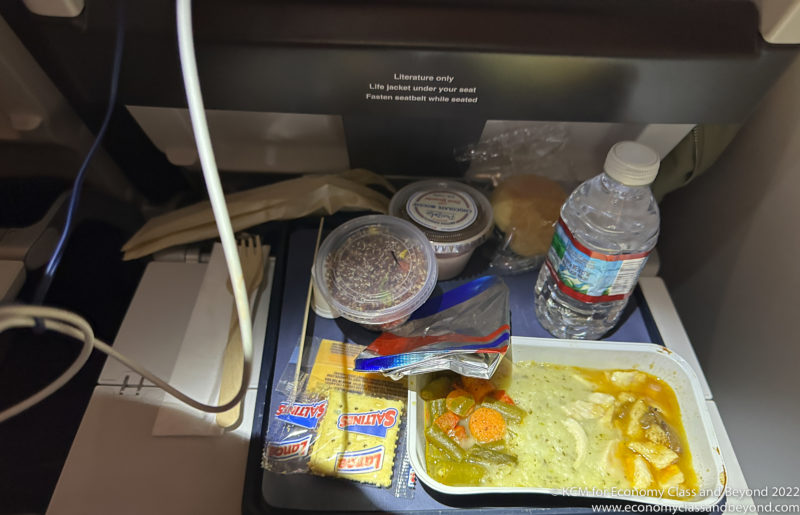
Certainly, the experience continues to be driven to customers buying into the experience rather than given to the customer on the aircraft as part of their fare.
At least some things like bottles of water and a pre-packaged snack remain – although given the fiscal constraints of next year, expect those to be under the axe if we’re not careful.
The fight for space across the cabin
Space in the cabin continues to be under pressure – with airlines choosing 17″ seat widths for their long haul missions when they can to squeeze extra passengers in – especially since Airbus has moved to a new production standard that would allow for such a configuration in the A350. Whilst Iberia chose to deliver it in a 3-3-3 configuration other airlines and their accountants will be working out how to cram an extra seat in.
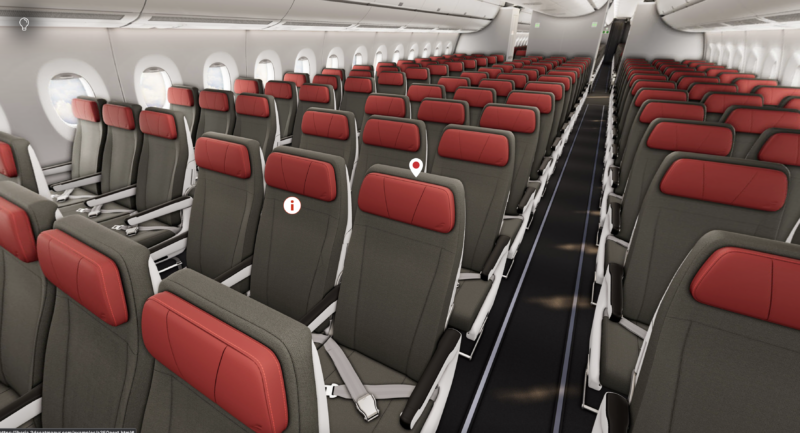
I mean. 4 extra inches across the cabin. Shrink the seats down the 17″ and boom – profit. And discomfort.
Meanwhile, in the short-haul economy, the 30″/29″ seats tend to be more the trend, as airlines try to cram every last millimetre out of the cabin to earn money. The result is seats that are more bench-like than anything else. Thankfully, a bit of technology and design means that there is some padding at least – although seat weight in this segment continues to be a key driver for airlines – with plush padding taking a back seat.
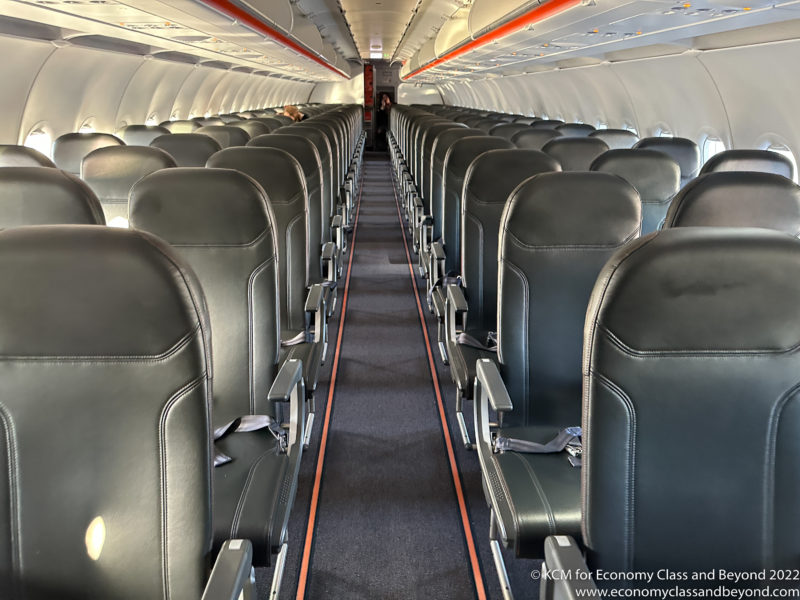
At least the modern generation of seating gives you that precious legroom
Meanwhile, Premium Economy seems to settle into its recliner goodness, pitched at 38″, with even a Middle Eastern airline deciding to deploy it on their A380 and Boeing 777-300 aircraft.

The Recaro PL3530, dressed for Emirates aboard the A380 – Image, Emirates
Those in business class have an interesting dilemma – how to pack those premium passengers as dense as possible whilst giving the best passenger experience? There have been some answers – be they slightly staggered business class seats, using under the seat in front to create a larger bed area, or going for a modified configuration. This can be seen with the Recaro CL6720 deployed with Iberia, the Polaris seat by SAFRAN for United and Collins Aerospace for British Airways.
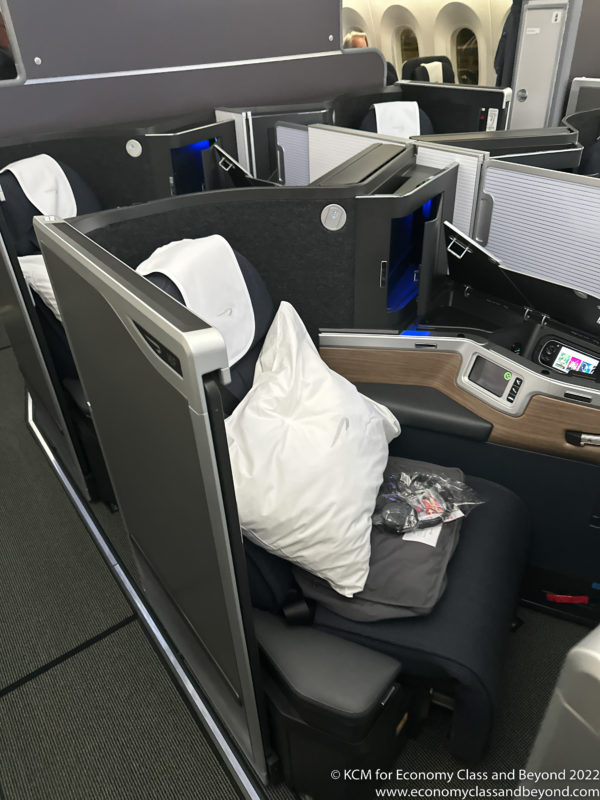
There has been some genuine movement in the space, with Collins Aerospace trying to redefine what a business class seat could be with the AirLounge product.
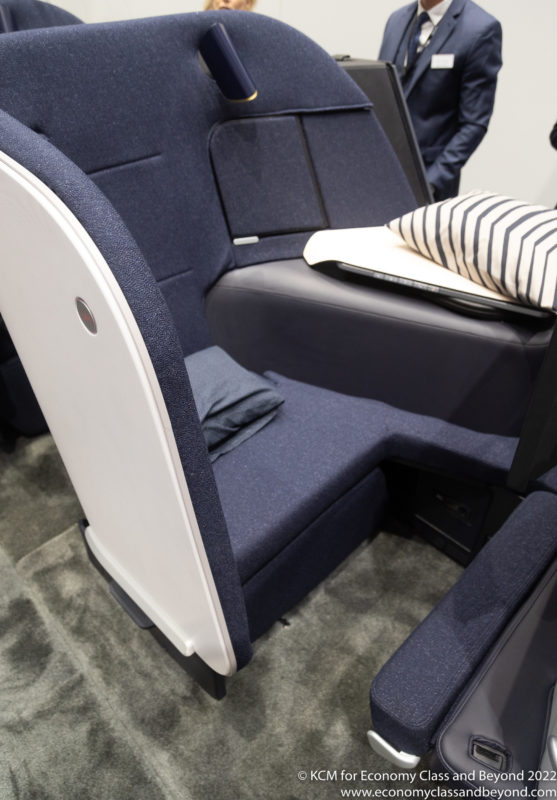
And when in doubt, slapping a door on your seat seems to be a mantra through the industry to attract customers for “privacy”.
For 2023, expect more of the same – weight reduction at the back, whilst the seats at the front get a bit plusher.
And who knows – we might see the new Lufthansa Business Class seat sometime soon.
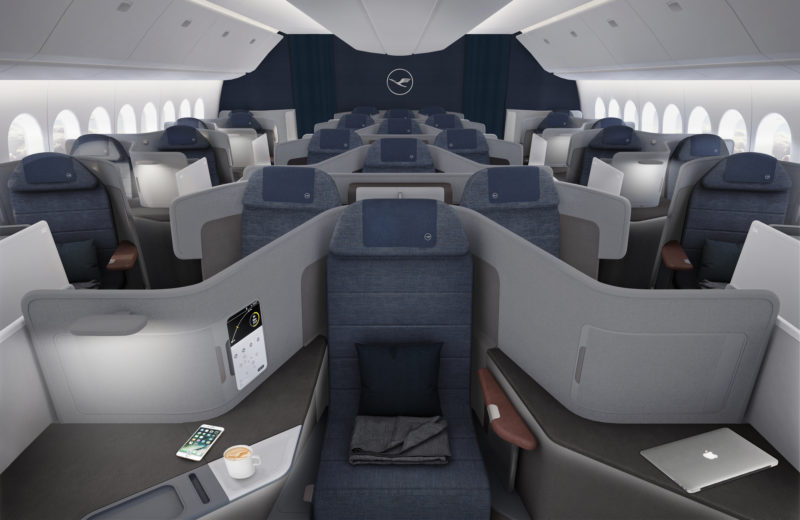
Currently: Running more than a few years late.
Connectivity – don’t expect inflight Wi-Fi to go away
It seems that airlines have finally realised that not putting connectivity on an aircraft is a bad thing, as airlines race to fit connectivity solutions – be it Viasat, Panasonic Aerospace, Inmarsat, EAN, or even deploying on-aircraft portals (in the case of Air-Fi and Bluebox).


There has also been movement from new market entrants of Oneweb and even Starlink who are starting to test deployments – which promise high bandwidth and lower latency.
One thing that we will need to see in 2023 is how airlines pay for that data.

With airlines promising “free” to some customers at the point of use, a sustainable revenue model will have to come – certainly, the days of $30 flight plans might have to take a back seat, as airlines seek sponsorship or partnerships to deliver bandwidth to the seat at a low cost.
The orders keep flowing, as do the deliveries
Whilst The Paris Air Show was a little bit of a damp squib in terms of new orders this year (compared to previous years), the desire for mega-orders for fleet renewals continues to be a thing, with United Airlines making a splash with a 100 Boeing 787s on the books.
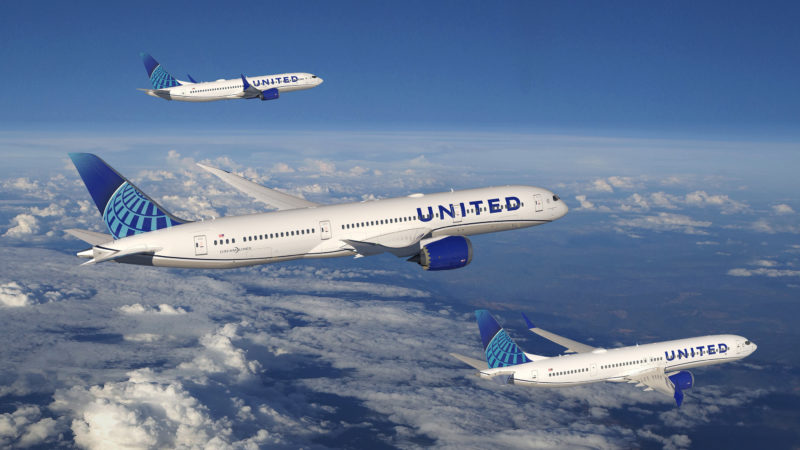
Meanwhile, Airbus has been securing narrow body orders from everywhere – to the point where delivery slots are going to be at a premium.
This can be seen with Lufthansa who has swept in to scoop up some wide-body aircraft with a collection of Airbus A350 and Boeing 787-9 aircraft, that were originally meant for other airlines (with a mish-mash of interiors to match).
Meanwhile, lessors who have the money to order aircraft continue to fill the important gap when airlines want new aircraft, but don’t want to stump up the capital in advance.
With efficiency continuing to drive the agenda, expect renewals to be high on the agenda when fuel prices spike again.
They always do.
A tough season for Low-Cost Carriers ahead?
2022 saw the return to the air of Norse Atlantic, Flyr as well as expansions by the Low-Cost Carriers across the board (most notably, Wizz Air, as well as the usuals).
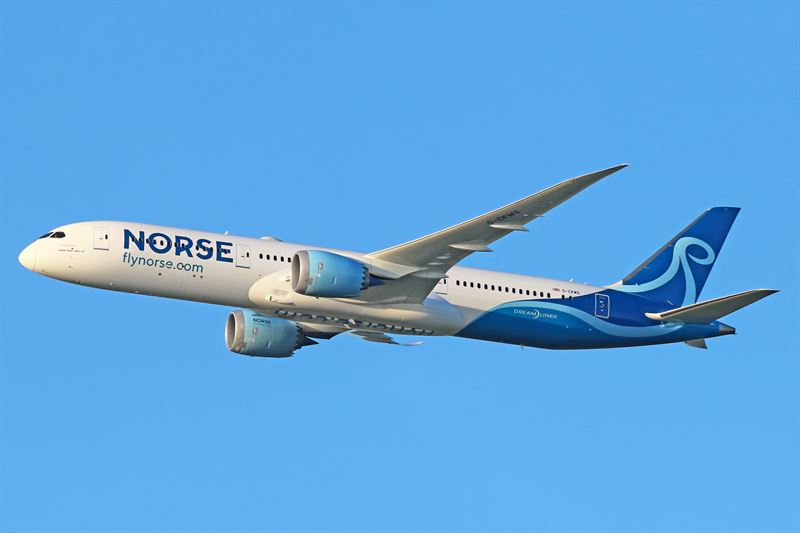
However, this has been in the backdrop of high fuel prices and tight labour markets. It’s shown in the winter season for airlines as them cutting back to their core services.
With the belt-tightening going on worldwide thanks to rampant inflation and rising interest rates, carriers will be looking to save in the run-up to the summer 2023 season. Those who can continue to sustain operations and turn over a profit should see their survival, but as usual – it will be down to cash flow.
And I’ve got this nasty feeling that some low-cost carriers could hit the wall next year once the summer comes and goes.
Sustainable Air Fuel – from where exactly?
With airlines having to be more “net-zero” aware more than ever, they are fighting to reduce emissions and move away from Jet-1A and traditional kerosene sources, with the “hail mary” of Sustainable Air Fuel and Biofuels.
The question remains – where from? There has been a flurry of announcements this year with airliens scrambling for supplies and promises.
And considering that both consultants and airlines are seeing this to help meet those net-zero commitments by 2050, supply will be key.
We’ve seen promises of production and quite frankly – drops of fuel compared to the kerosene requirements. The question of mass manufacturing of SAF remains.
Whilst there is progress on hydrogen and electrically powered aircraft, with lots of new concepts coming up for air (as well as a few demonstrations), there will need to be some quantum leaps to power the larger aircraft over the next few years.
It’s never boring
We can never claim the aviation industry is boring – far from it as we can see as the industry hit into high gear as it attempted to recover from two years of poor custom – or in some cases being grounded.
Next year seems to be more of the same, with airlines hoping to get to pre-pandemic numbers – even as China opens up a little more (along with everything else that goes with it).
Sustainability will be high on the agenda – and that won’t be going away. Delivery of that will be the hard part.
It’s going to be an interesting year ahead. I hope you can join me for some of it.
Welcome to Economy Class and Beyond. Your no-nonsense guide to network news, honest reviews, featuring in-depth coverage, unique research, as well as the humour and madness I only know how to deliver.
Follow me on Twitter at @EconomyBeyond for the latest updates, as well as Mastodon too! You can follow me on Instagram too!
Also, remember that we are part of the BoardingArea community, bringing you the latest frequent flyer news from around the world.